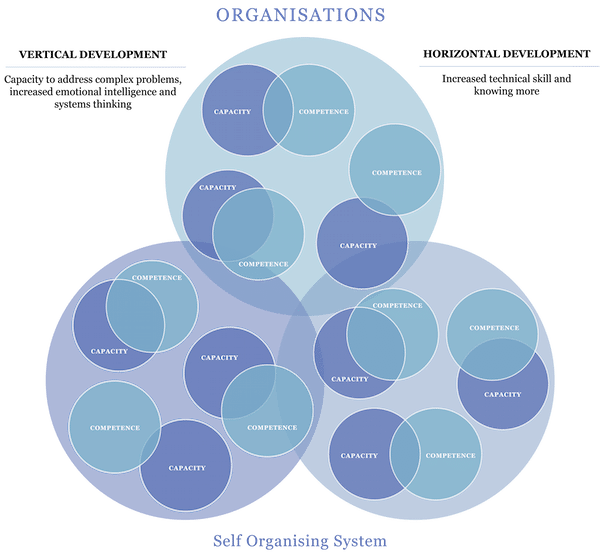Bediako, Ghanaian Theologian
Organizations are human systems and whilst the language of ‘human systems’ has been around for a long time most organizations still report operating from a mechanistic paradigm, which in an increasingly complex and fast-changing world, is becoming less and less fit for purpose.
As a result, many far-sighted organizations are looking to self-organising systems for models of successful adaptation. Such models exist in what we know as the more-than-human world: nature generally, and in ecosystems in particular. Ecosystems are places where the potential of all the elements can be fully expressed, where the diversity of living and non-living entities can co-engage and thrive according to their own sorts of order. When ecosystems are healthy and fully functional all participants are present at the gathering. At every level, healthy ecosystems express a deep sense of wholeness and purpose.
A systems approach assumes that an organization is materially and relationally interconnected and can’t be mechanically dismantled and re-assembled as if it were some kind of broken clock. It assumes that there are many different perceptions of reality. It assumes emergence and the ability to self organize. It assumes that patterns that already exist in the system can be diminished or enhanced. It certainly assumes that culture change is the product of many individuals self-organising collaboratively in pursuit of purposeful and meaningful shared outcomes and is way beyond the capacity of any one individual to achieve.
Organizations, cultures, countries, disciplines, myths and narratives have levels of consciousness (action logics) just as much as individuals and teams do. By developing greater corporate consciousness it is possible to take this more systemic approach to change , and look to shift the human system itself. This is second order change, change of the system as opposed to change within the system.
We have broad experience taking an adult developmental systemic approach into organizations to support culture change and development.
Is the GLP a good organizational fit?
As the concept and practice of a systemic adult developmental approach continues to gain traction and wider acceptance in the context of leadership and organizational change we are finding more organizations wanting to think, work and ‘lead’ in this way.
Whilst there is a great appetite to engage with this approach, organizations often ask our advice as to how they can effectively embed this way of thinking, doing and being into their work.
One of the central pillars of our work is to support, advise and consult with internal sponsors who are already embedding this work in their organizations so that momentum is maintained and obstacles are overcome.
Contact us below, to find out how we might work with you in your organization
(click image to expand)

